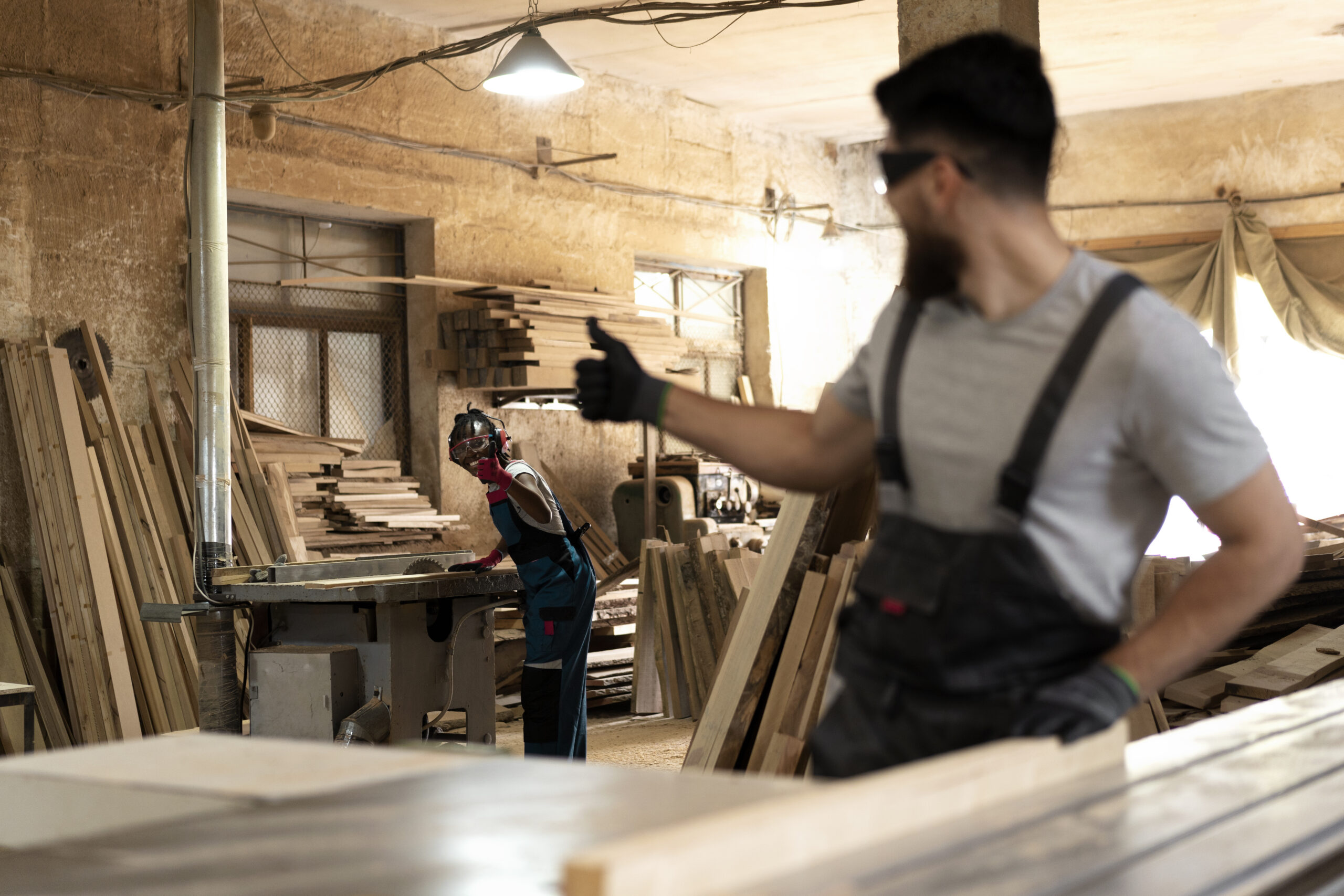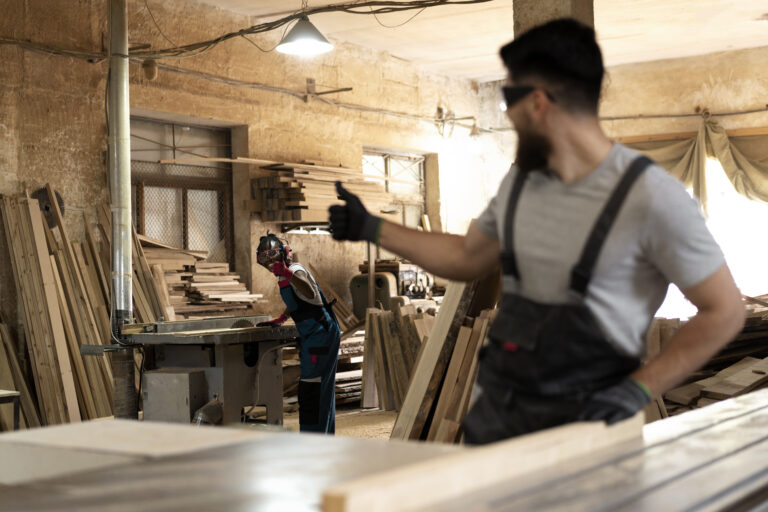When you walk into a brand-new home or a remodeled kitchen, chances are a carpenter had their hands on just about everything you see.
From framing the structure to building the cabinets, carpenters are the backbone of most construction industries.
This isn’t a job that sticks to one thing all day. Carpenters build, repair, and install everything from walls to windows, stairs to shelving. It’s physical work, yes, but also super detailed. It takes sharp skills, the right tool, and a lot of patience.
Who Is A Carpenter?
Think of a carpenter as a craftsperson with a deep understanding of wood, tools, and how things fit together.
Some specialize in rough carpentry, like framing and beams, while others work on the finishing touches, like trim, floors, and cabinets.
They don’t all do the same thing. One might spend their day framing houses on a busy job site, while another is tucked away in a workshop building custom furniture. But they all have one thing in common: they work with their hands and their head, turning plans into reality.
What Carpenters Actually Do (Day To Day)
Carpenters wear many hats depending on the project they’re on. Let’s break it down.
Planning & Measuring
Before a single board is cut, carpenters review drawings or blueprints to figure out what needs to be done. They measure, mark, and lay out materials, often double-checking everything to make sure it’s right. Accuracy isn’t just helpful, it’s required. One wrong cut can mess up the whole job.
Building Things That Last
This is what most people picture. Carpenters cut wood, fit pieces together, and fasten them in place. That could mean building walls, installing doors and windows, or laying down floors.
In kitchens, they’re the ones installing cabinets and making sure everything lines up. Their job often overlaps with other trades, too, so good communication is part of the deal.
Fixing And Updating Structures
Many carpenters work in remodeling, which means fixing things that are worn out or no longer up to code.
That could be patching up an old deck, replacing rotten wood, or making updates during a renovation. Repair work often requires problem-solving on the fly and knowing how to adapt without cutting corners.
Where You’ll Find Carpenters Working
Carpenters work everywhere. They might be on new residential builds, busy commercial developments, or in someone’s home doing finish work. Some spend time in shops or warehouses prepping materials before installation. Others travel between sites every week.
No matter where they are, one thing’s for sure: they need to be ready for different job conditions, tools, and timelines. That’s what makes the trade so dynamic and hands-on.
Tools You Need As A Carpenter In The Construction Industry

Ask any carpenter and they’ll tell you their tools are an extension of themselves. Tape measures, levels, and chisels are basic gear. Power saws, drills, and nail guns are on every site. They also use layout tools and jigs to make their work cleaner and faster.
More and more digital tools are making their way into the trade, especially when it comes to planning, layout, or learning new techniques.
Learning to use these tools safely and confidently is a big part of getting started. That’s where HSE (Health and Safety Executive) training comes in. Knowing the rules, protecting yourself, and working cleanly isn’t optional; it’s expected.
What Makes A Good Carpenter?
It’s not just about strength or knowing how to shape wood. A good carpenter blends technical skills with patience, precision, and problem-solving.
Here’s what really makes someone stand out:
- Strong math skills for accurate cuts and layout
- A solid grip on different building materials and when to use them
- Comfort with both hand and power tools
- A sense of space, design, and function
- Ability to follow building codes and meet safety standards
- Experience on real job sites, working with teams, and deadlines
A good carpenter is someone who keeps learning, because every project teaches something new.
How Carpenters Learn The Trade?
Most carpenters don’t just jump in with a toolbox and go. They often start with an apprenticeship program where they learn from experienced tradespeople. These programs usually last a few years and mix classroom work with hands-on experience.
Others begin in helper roles and pick up skills on the job. Either way, real work experience is key to getting better and gaining confidence.
If you’re just starting out, tools like Tradefox can be super helpful. It’s a simulation-based platform that helps beginners learn how construction and renovation work in a practical, hands-on way, without the pressure of being on a live job site.
What’s Next After You Learn The Skill?
Once a carpenter gets their skills up, there are all sorts of ways to grow. They might become lead carpenters, manage crews, or open their own shop. Others move into specialized areas like custom cabinetry, wood restoration, or construction supervision.
The demand for skilled carpenters is high, and with the right experience, doors open fast, especially in fast-moving sectors like residential building or the remodeling industry.
Final Thoughts
At its core, carpentry is about building something real. It’s about turning raw material into something that works, something that lasts. Whether it’s a staircase in a new home or a restored wooden porch, the work carpenters do leaves a mark.
If you like solving problems, working with your hands, and seeing the results of your effort at the end of the day, carpentry could be a path worth exploring. And for those looking to get started, the tools and training are more accessible than ever.



